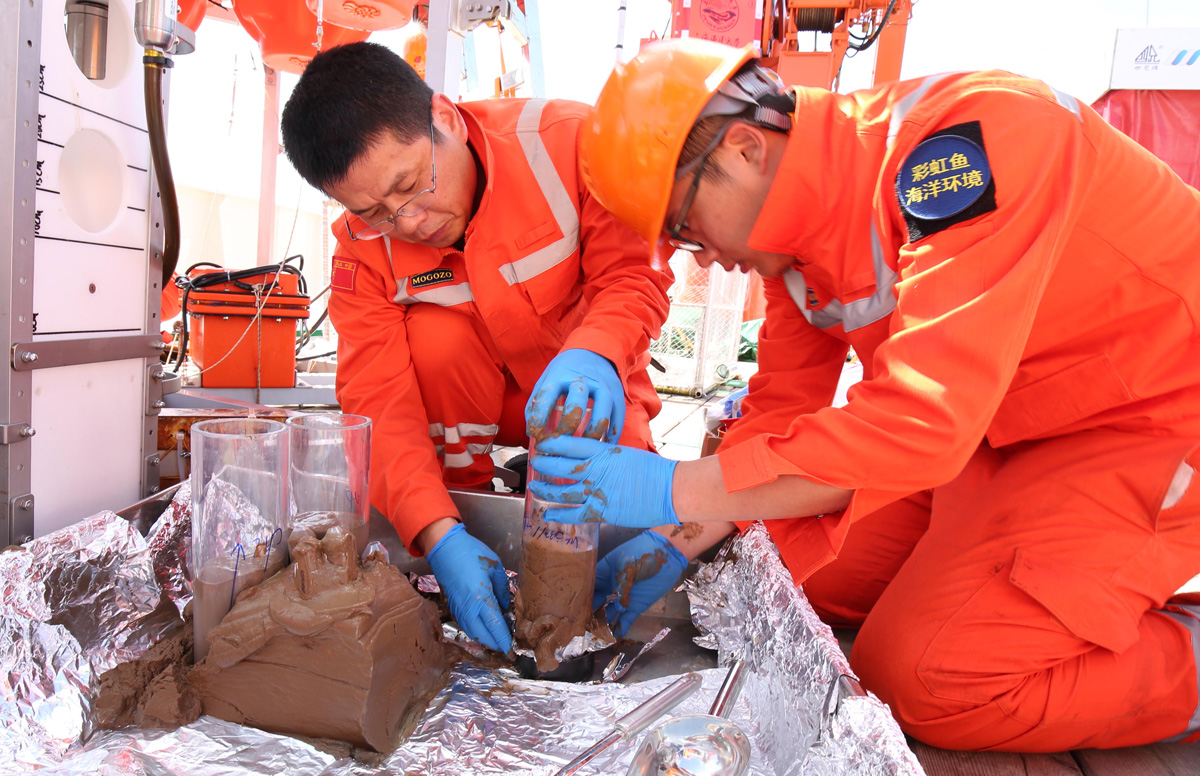Since the Industrial Revolution, tens of thousands of tons of mercury have entered the world’s oceans, traveling up marine food webs into the fish we eat. But each year, an estimated 200 to 600 metric tons of the toxic metal settle beneath sediments on the seafloor, where it can no longer affect human health. A lack of data, however, has prevented scientists from understanding just how much mercury gets locked away in the deepest parts of the oceans.
An international team of researchers braved those depths. Using seafloor landing rigs to snag sediments and bottom feeders from trenches in the western Pacific, they found accumulations of mercury far beyond what researchers had expected for the deep ocean.
“This knowledge can help us develop more effective mercury management targets and measures based on a complete understanding of the global mercury cycle.”
“This knowledge can help us develop more effective mercury management targets and measures based on a complete understanding of the global mercury cycle,” wrote Maodian Liu, a postdoctoral fellow at the Yale School of the Environment, in an email.
The group will present their findings, published in the Proceedings of the National Academy of Sciences of the United States of America and Environmental Science and Technology Letters, on 12 December at AGU’s Fall Meeting 2022.
An Impossible Lift
Harvesting sediments from such depths was a herculean challenge.
Liu’s colleagues sailed the Chinese research vessel Zhangjian over the Mariana, Massau, New Britain, and Bougainville trenches. At each site, the researchers deployed autonomous landers—“basically a metal frame that supports a host of scientific instruments,” wrote Yunping Xu, director of marine science and technology at Shanghai Ocean University and a coauthor of the study, in an email to Eos.
One lander included cages stocked with stinky mackerel to lure amphipods—shrimplike animals that crawl along the trench floors, scavenging the mercury-tainted organic matter that drifts down from above.
“You’re on a ship bobbing around the ocean, and you’re trying to bring a core back up to the surface from six and a half kilometers down, intact. That’s pretty spectacular.”
The landers plummeted to the seafloor—almost 11 kilometers for one trench—and gathered cylinders of sediment, or cores, before resurfacing after 2–3 hours. When trapping amphipods, the researchers’ wait grew to 12 hours.
“You’ve got to admire the technical skill,” said Peter Outridge, a research scientist with the Geological Survey of Canada who was not involved in the study. “You’re on a ship bobbing around the ocean, and you’re trying to bring a core back up to the surface from six and a half kilometers down, intact. That’s pretty spectacular.” Outridge belongs to the only other group to have measured mercury accumulation in deep trench sediments.
To add to the challenge, a storm greeted the researchers over the Mariana and Massau trenches. “Our biggest feeling was ‘dizzy,’” said Xu. “We even waited for almost 1 week until the weather was temporarily suitable.”
High Numbers at Low Depths
The team collected 9 cores and 12 amphipods. Back in the lab, the researchers analyzed the sediments and dissected the animals to determine how much mercury they had ingested. Through the layers of sediment, the scientists found mercury burial rates up to 400 times higher than earlier estimates suggested for the deep ocean.
The amphipods, on average, harbored more than twice as much methylmercury—a particularly toxic form of the metal—as their counterparts in shallower water. Biologists have not yet examined how the toxin might affect the crustaceans’ health, Liu said.

The team estimated that up to 17,000 metric tons of mercury could have settled into deep-sea trenches since 1900—equivalent to 28% of the amount in the entire ocean from human activity. This amount makes the trenches a significant sink because they occupy less than 0.5% of Earth’s seafloor area. Their V shapes, the researchers believe, concentrate sinking material the way valleys on land funnel rainwater.
Outridge cautioned that data from one or two cores per trench may not be enough to determine exactly how much mercury is locked away. But overall, he said, the team’s findings agree with those of his own group.
Mercury buildup in the sediments accelerated over the past 120 years as industries released greater amounts of the metal, the authors said. Their analysis suggests most of that mercury floats down from the atmosphere, hitching a ride to the deep sea on bits of sinking organic matter.
But whereas some mercury makes the trip in decades, the bulk of it takes centuries—sometimes millennia—to finally nestle within the seafloor, Outridge noted. He compares its lingering presence in the water column to carbon dioxide emissions in the atmosphere: “Most of it’s still going to be around in a hundred years,” he said. “It takes a while.”
—Sean Cummings (@SciNonficSean), Science Writer


